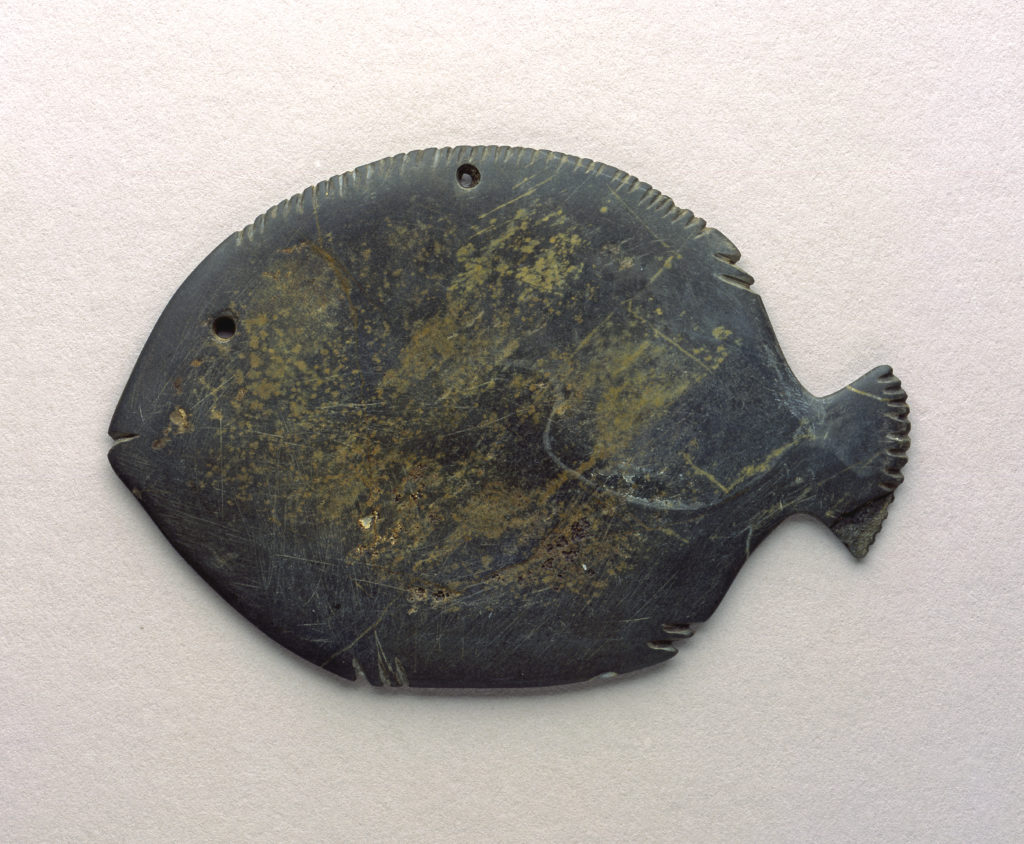NCMA Explore: Cosmetic Palette in the Form of a Fish (NCMA Explore Resource)
Make a copy of this resource in slide form!
About the Culture
The Predynastic Period is the era of Egyptian history before pharaohs ruled the land. People began to live in one place rather than move around as nomads. The Sahara became more dry and like the desert it is today. The people buried their dead away from floodplains. Modest tombs included objects needed in the afterlife.
About the Object
A cosmetic palette is a surface for grinding natural materials into powders for use as makeup. This palette is shaped like a bolti fish, which swims in the shallow waters of Nile River marshes and symbolizes rebirth. This object was made for burial rather than for everyday use.
Look Closely
- How would you describe the shape of this object? What does the shape remind you of? What additional features do you notice?
- How does the object’s design support its purpose as a surface for grinding materials into powder?
Discuss
- Female bolti fish carry their fertilized eggs in their mouths to protect them. When the eggs hatch, they emerge from the mouth rather than a nest. For this reason ancient Egyptians connected the bolti fish to fertility, growth, and rebirth. What other examples of animal symbolism from ancient Egyptian culture are you familiar with? What are some examples of animal symbolism from your own culture?
- In predynastic Egypt and later, people across social classes wore udju, a green eyeshadow made from ground malachite and ointments. It served multiple purposes: to enhance beauty, protect from the elements, associate with a goddess, and ward off the evil eye. How does makeup have a similar or different role in society today?
Reflect
Ancient Egyptians prepared for the afterlife by including essential items, such as this cosmetic palette, in their tombs.
- What is essential to your life?
- What are some material things that matter to you?
- What are intangible things that you need?
Learn more
Visit the “Learn More” sidebar to find more information about the object and culture.

